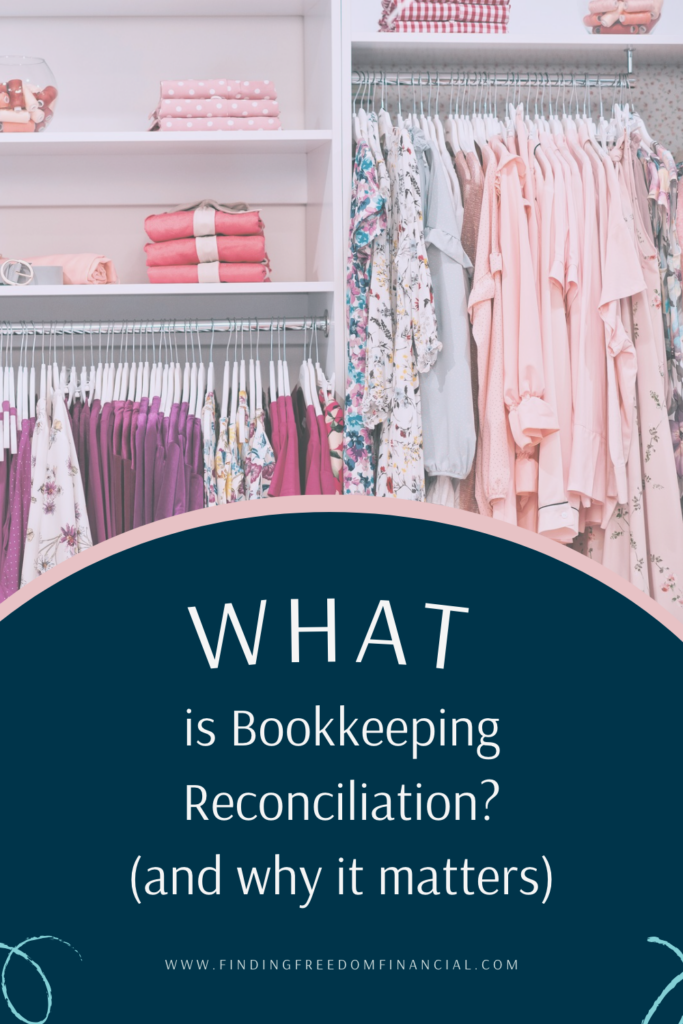What is a Bookkeeping Reconciliation?
A bookkeeping reconciliation – there’s a fancy accounting term for you. But, what exactly does that mean? Well, let’s take a look!

What is a Bookkeeping Reconciliation?
A bookkeeping reconciliation, or reconciliation for short, simply means that you are comparing 2 sets of financial records to make sure that they match. In most cases, you will be comparing your Quickbooks (or other bookkeeping software) information, to the statements provided by your bank, credit card company, or payment processor.
The Importance of a Bookkeeping Reconciliation
This process is important because it helps ensure that the information you’re using as your bookkeeping records is accurate. After all, you will be using this information to file your taxes and help make important decisions, so you want to make sure it’s accurate!
Being able to reconcile, or match, the information you have in Quickbooks to your statements will help ensure that nothing has been missed, or duplicated, in error. Even if you have all your bank & credit card accounts connected in Quickbooks, reconciliations are still super important because those bank feeds are NOT perfect. They glitch, and sometimes transactions will be pulled in twice, or missed altogether.
How to do a Bookkeeping Reconciliation
So, how do you perform a reconciliation inside Quickbooks Online? They make it really slick!
In Quickbooks Online, go to Transactions > Reconcile. Pull out all your monthly statements for the current year for the account you want to reconcile. Start with the first statement of the year and find the Ending Balance and the Statement Date. You will enter these 2 pieces of information on your Quickbooks Reconciliation screen. Then click “Start reconciling”
On the new screen, you will see a listing of ALL the transactions that are “unreconciled” through the statement date.
Quick note: If you’ve never done a reconciliation before, you may want to do a bulk reconciliation to clear out all the old transactions from prior years. If you need help with that, feel free to send me a DM on instagram @findingfreedomfinancial.
If a transaction was added from a connected bank/credit card feed, it should be automatically checked off. The goal of the reconciliation is to get the green “checkmark” icon, and for it to display a $0 difference. That means that the total deposits/withdrawals in your Quickbooks matches the totals reflected on your bank or credit card statement!
What About Payment Processor Accounts?
If you utilize Stripe or PayPal, they do provide monthly statements that make it easy for you to reconcile those accounts each month. But, what about Shopify or Sezzle? Although there’s no straightforward report, you CAN use the transaction reports to see what is in-process at the end of each month to make up an “ending balance”.
I want to challenge each of you to start making sure that you are reconciling ALL of your bank accounts, credit cards, and payment processors each and every month to make sure that all your numbers are accurate & useful in helping you make decisions to grow your businesses!
If you wanna see a more comprehensive list of other bookkeeping tasks you should be doing each month, check out these blog posts:
5 Essential Bookkeeping Tasks for a Stress-Free Tax Season
The Comprehensive Bookkeeping Task List for Your Boutique
Here’s to finding your own version of freedom,
Hi, I’m Megan!
Bookkeeping for the retail industry has some unique complexities that take extra time to manage to ensure accuracy. At Finding Freedom Financial Services, I provide done-for-you bookkeeping services for boutique owners that accurately track these complexities for you so you can have more time and focused energy to dedicate to running your stores. If you’re ready to get your time back, apply to work with me today!
